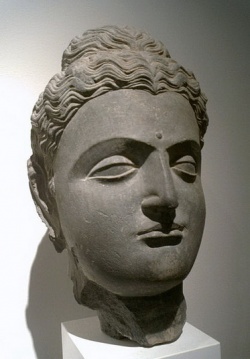Persian rule
The Persian invaders of Gandara were commanded by king Cyrus the Great (559-530). Although there is no source that describes this event, we may be confident that it happened, because king Darius the Great (522-486) mentions Gandara as one of the countries he inherited when he became king (in the Behistun inscription).
The capital of Gandara was later called Kapisa. The city was strategically situated: it controlled the roads to the Etymandrus valley, to the Cophen valley and to the passes leading to Bactria. Its modern name is Begram and it lies 75 kilometers north of Kabul, near Chârikâr.
According to the Greek researcher Herodotus of Halicarnassus (fifth century BCE), the Gandarians belonged to the seventh (and poorest) tax district of the Achaemenid empire, together with three other tribes, the Sattagydians, the Dadicae and Aparitae. He dates his list of tax districts during the reign of king Darius.
It is certain that Darius sent out a Carian named Scylax of Caryanda to describe the eastern territories of his empire. He started his tour in a town called Caspatyrus, which must have been situated somewhere on the banks of the Cophen. In those years, the satrap of Gandara was Megabazus, who had been fighting in Europe after 513.
A generation later, we hear again about Gandara. Herodotus mentions how a contingent of Gandarian and Dadican soldiers was ordered to fight in Greece in 480 BCE.
This is the last time Gandara is mentioned in our sources for about a century and a half. There is one exception: we know that yaka-wood was transported from Gandara and Carmania to Susa, where a new palace was built. It is not clear what yaka-wood may have been (perhaps teak-wood?), but it must have been very precious. In the palace at Persepolis, pictures of Gandarians can be seen. They carry swords and shields and take buffaloes to the great king.
